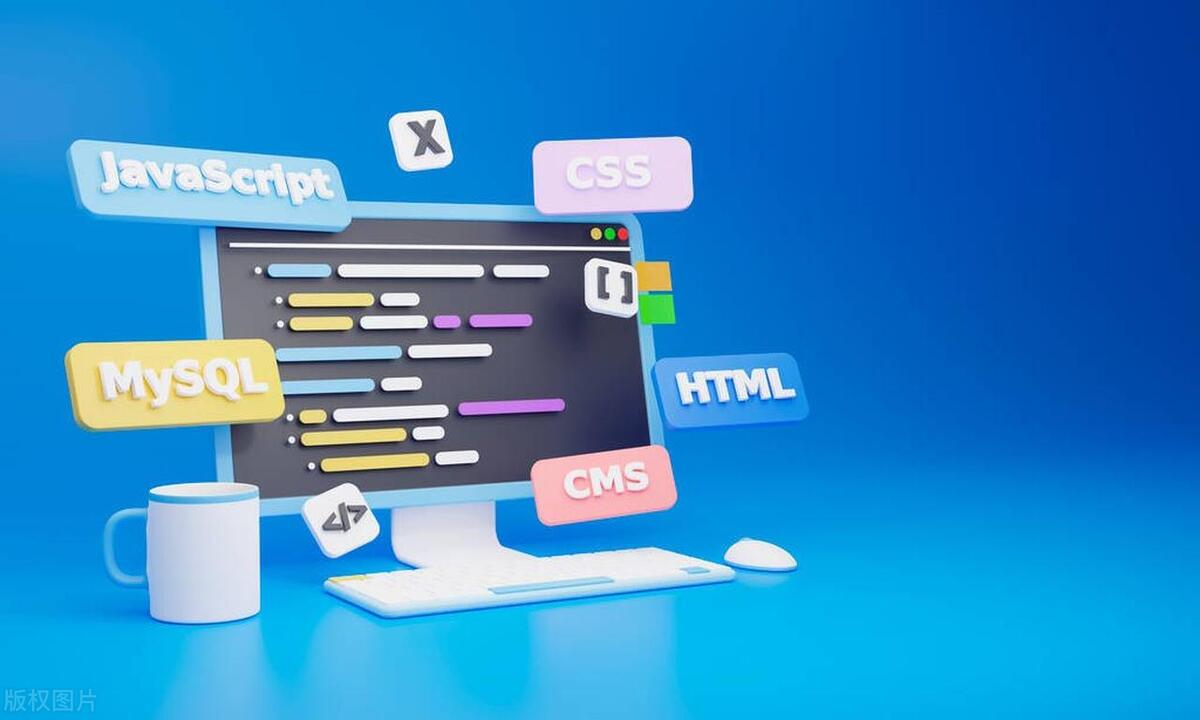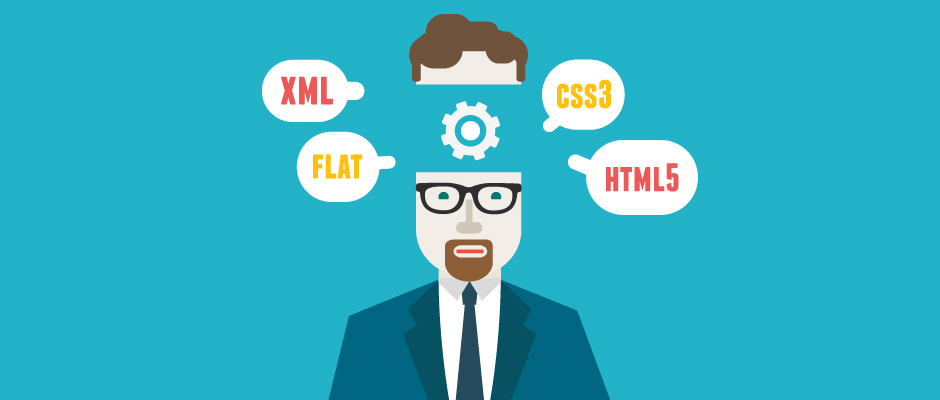Three.js is a beginner-friendly JavaScript library that simplifies 3D web graphics by abstracting complex WebGL code into manageable components. 1. It uses a scene-graph structure where the Scene holds objects, the Camera defines the view, and the Renderer draws everything to a canvas. 2. Key elements include Mesh (geometry material), and Light for visibility. 3. Animation is achieved through requestAnimationFrame for smooth updates. 4. Interactivity can be added via event listeners or OrbitControls for camera manipulation. 5. Best practices include using a CDN for setup, reusing objects in loops, handling window resize, and learning from official examples. With minimal code, such as creating a rotating cube, users can quickly start building interactive 3D experiences on the web.

If you’ve ever wanted to bring 3D graphics to the web without diving into complex WebGL code, Three.js is the perfect starting point. It’s a lightweight, open-source JavaScript library that makes it easier to create and display 3D content in the browser. For beginners, it removes much of the complexity while still offering powerful tools to build interactive 3D experiences.

Here’s what you need to know to get started with Three.js — no prior 3D experience required.
What Is Three.js?
Three.js is a JavaScript library that wraps WebGL, the low-level API for rendering 3D graphics in the browser. Instead of writing hundreds of lines of shader code, Three.js gives you high-level objects like scenes, cameras, lights, and meshes that you can manipulate with simple JavaScript.

Think of it like this:
- WebGL = building a car from scratch.
- Three.js = driving a ready-to-use car with a great dashboard.
It’s widely used for 3D websites, data visualizations, games, product previews, and even virtual reality experiences.

The Core Components of a Three.js Scene
Every Three.js project relies on a few essential elements. You’ll need all of them to render even the simplest 3D object:
- Scene – The container for all your 3D objects, lights, and cameras.
- Camera – Determines how the scene is viewed (like a virtual camera lens).
- Renderer – Draws the scene onto a canvas in your HTML page.
- Mesh – A combination of geometry (shape) and material (appearance).
- Light – Without light, most materials won’t be visible.
Here’s a minimal example to create a spinning cube:
// 1. Set up the scene, camera, and renderer
const scene = new THREE.Scene();
const camera = new THREE.PerspectiveCamera(75, window.innerWidth / window.innerHeight, 0.1, 1000);
const renderer = new THREE.WebGLRenderer();
renderer.setSize(window.innerWidth, window.innerHeight);
document.body.appendChild(renderer.domElement);
// 2. Create a cube
const geometry = new THREE.BoxGeometry();
const material = new THREE.MeshBasicMaterial({ color: 0x00ff00, wireframe: true });
const cube = new THREE.Mesh(geometry, material);
scene.add(cube);
// 3. Position the camera
camera.position.z = 5;
// 4. Animation loop
function animate() {
requestAnimationFrame(animate);
// Rotate the cube
cube.rotation.x = 0.01;
cube.rotation.y = 0.01;
renderer.render(scene, camera);
}
animate();This code sets up a basic scene with a rotating wireframe green cube. Once you get this running, you’re already in 3D territory.
Key Concepts to Understand Early
To go beyond the basics, focus on these foundational ideas:
- Coordinate System: Three.js uses a right-handed coordinate system. X = right, Y = up, Z = toward you (out of the screen).
- Geometry vs. Material:
- Geometry defines the shape (cube, sphere, custom mesh).
- Material defines how it looks (color, texture, shininess).
- Lighting Types:
MeshBasicMaterialdoesn’t react to light (good for testing).MeshLambertMaterialandMeshPhongMaterialdo — you’ll need lights likeDirectionalLightorPointLight.
- Animation Loop: Use
requestAnimationFrame()to update the scene every frame.
Making It Interactive
One of the best parts of Three.js is making scenes interactive. You can respond to mouse movement, clicks, or scroll events.
For example, to rotate the cube only when the user clicks:
let rotating = false;
renderer.domElement.addEventListener('click', () => {
rotating = !rotating;
});
function animate() {
requestAnimationFrame(animate);
if (rotating) {
cube.rotation.y = 0.02;
}
renderer.render(scene, camera);
}
animate();You can also use libraries like OrbitControls to let users pan, zoom, and rotate the camera with the mouse:
const controls = new THREE.OrbitControls(camera, renderer.domElement);
Just include the OrbitControls.js file from the examples folder in the Three.js repo.
Getting Started Tips
- Use a Boilerplate: Start with a simple HTML file that includes Three.js via CDN:
<script src="https://cdnjs.cloudflare.com/ajax/libs/three.js/r128/three.min.js"></script>
- Check the Examples: The official Three.js website is full of working demos you can learn from.
-
Developer Tools: Resize issues? Check your canvas size. Use
window.addEventListener('resize', ...)to adjust renderer size and camera aspect ratio. - Performance: Avoid creating new objects in the animation loop. Reuse vectors and matrices when possible.
Three.js lowers the barrier to 3D web development in a big way. Once you understand the scene-graph structure and how objects interact, you can start building everything from animated backgrounds to full 3D games. Start small, experiment often, and don’t be afraid to break things — that’s how you learn.
Basically, with just a few lines of code, you’re already on your way to creating immersive web experiences.
The above is the detailed content of Three.js for Beginners: Creating 3D Experiences on the Web. For more information, please follow other related articles on the PHP Chinese website!

Hot AI Tools

Undress AI Tool
Undress images for free

Undresser.AI Undress
AI-powered app for creating realistic nude photos

AI Clothes Remover
Online AI tool for removing clothes from photos.

Clothoff.io
AI clothes remover

Video Face Swap
Swap faces in any video effortlessly with our completely free AI face swap tool!

Hot Article

Hot Tools

Notepad++7.3.1
Easy-to-use and free code editor

SublimeText3 Chinese version
Chinese version, very easy to use

Zend Studio 13.0.1
Powerful PHP integrated development environment

Dreamweaver CS6
Visual web development tools

SublimeText3 Mac version
God-level code editing software (SublimeText3)
 How does React handle focus management and accessibility?
Jul 08, 2025 am 02:34 AM
How does React handle focus management and accessibility?
Jul 08, 2025 am 02:34 AM
React itself does not directly manage focus or accessibility, but provides tools to effectively deal with these issues. 1. Use Refs to programmatically manage focus, such as setting element focus through useRef; 2. Use ARIA attributes to improve accessibility, such as defining the structure and state of tab components; 3. Pay attention to keyboard navigation to ensure that the focus logic in components such as modal boxes is clear; 4. Try to use native HTML elements to reduce the workload and error risk of custom implementation; 5. React assists accessibility by controlling the DOM and adding ARIA attributes, but the correct use still depends on developers.
 Describe the difference between shallow and full rendering in React testing.
Jul 06, 2025 am 02:32 AM
Describe the difference between shallow and full rendering in React testing.
Jul 06, 2025 am 02:32 AM
Shallowrenderingtestsacomponentinisolation,withoutchildren,whilefullrenderingincludesallchildcomponents.Shallowrenderingisgoodfortestingacomponent’sownlogicandmarkup,offeringfasterexecutionandisolationfromchildbehavior,butlacksfulllifecycleandDOMinte
 What is the significance of the StrictMode component in React?
Jul 06, 2025 am 02:33 AM
What is the significance of the StrictMode component in React?
Jul 06, 2025 am 02:33 AM
StrictMode does not render any visual content in React, but it is very useful during development. Its main function is to help developers identify potential problems, especially those that may cause bugs or unexpected behavior in complex applications. Specifically, it flags unsafe lifecycle methods, recognizes side effects in render functions, and warns about the use of old string refAPI. In addition, it can expose these side effects by intentionally repeating calls to certain functions, thereby prompting developers to move related operations to appropriate locations, such as the useEffect hook. At the same time, it encourages the use of newer ref methods such as useRef or callback ref instead of string ref. To use Stri effectively
 Vue with TypeScript Integration Guide
Jul 05, 2025 am 02:29 AM
Vue with TypeScript Integration Guide
Jul 05, 2025 am 02:29 AM
Create TypeScript-enabled projects using VueCLI or Vite, which can be quickly initialized through interactive selection features or using templates. Use tags in components to implement type inference with defineComponent, and it is recommended to explicitly declare props and emits types, and use interface or type to define complex structures. It is recommended to explicitly label types when using ref and reactive in setup functions to improve code maintainability and collaboration efficiency.
 How to handle forms in Vue
Jul 04, 2025 am 03:10 AM
How to handle forms in Vue
Jul 04, 2025 am 03:10 AM
There are three key points to be mastered when processing Vue forms: 1. Use v-model to achieve two-way binding and synchronize form data; 2. Implement verification logic to ensure input compliance; 3. Control the submission behavior and process requests and status feedback. In Vue, form elements such as input boxes, check boxes, etc. can be bound to data attributes through v-model, such as automatically synchronizing user input; for multiple selection scenarios of check boxes, the binding field should be initialized into an array to correctly store multiple selected values. Form verification can be implemented through custom functions or third-party libraries. Common practices include checking whether the field is empty, using a regular verification format, and displaying prompt information when errors are wrong; for example, writing a validateForm method to return the error message object of each field. You should use it when submitting
 Server-Side Rendering with Next.js Explained
Jul 23, 2025 am 01:39 AM
Server-Side Rendering with Next.js Explained
Jul 23, 2025 am 01:39 AM
Server-siderendering(SSR)inNext.jsgeneratesHTMLontheserverforeachrequest,improvingperformanceandSEO.1.SSRisidealfordynamiccontentthatchangesfrequently,suchasuserdashboards.2.ItusesgetServerSidePropstofetchdataperrequestandpassittothecomponent.3.UseSS
 A Deep Dive into WebAssembly (WASM) for Front-End Developers
Jul 27, 2025 am 12:32 AM
A Deep Dive into WebAssembly (WASM) for Front-End Developers
Jul 27, 2025 am 12:32 AM
WebAssembly(WASM)isagame-changerforfront-enddevelopersseekinghigh-performancewebapplications.1.WASMisabinaryinstructionformatthatrunsatnear-nativespeed,enablinglanguageslikeRust,C ,andGotoexecuteinthebrowser.2.ItcomplementsJavaScriptratherthanreplac
 What is content security policy CSP
Jul 04, 2025 am 03:21 AM
What is content security policy CSP
Jul 04, 2025 am 03:21 AM
Content Security Policy (CSP) prevents attacks such as XSS by limiting the loading source of web page resources. Its core mechanism is to set a whitelist to prevent unauthorized scripts from being executed. The steps to enable include: 1. Define the policy and clarify the allowed resource sources; 2. Add Content-Security-PolicyHTTP header to the server; 3. Use Report-Only mode to test and debug in the initial stage; 4. Continuous monitoring and optimization strategies to ensure that they do not affect normal functions. Notes include handling inline scripts, careful use of third-party resources, compatibility support, and other irreplaceable security measures.






